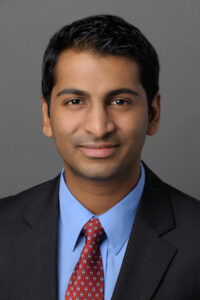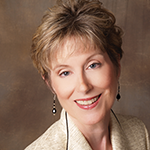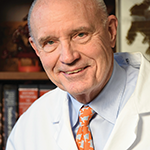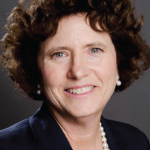 As rheumatology fellows around the country begin to explore various career opportunities, they typically look to academic rheumatology, private practice, industry and research. Vivek K. Murthy, MD, MSc, however, has carved a unique clinical pathway in both rheumatology and hospital medicine, merging his various skills and interests in medical education, diagnostic expertise and clinical problem solving.
As rheumatology fellows around the country begin to explore various career opportunities, they typically look to academic rheumatology, private practice, industry and research. Vivek K. Murthy, MD, MSc, however, has carved a unique clinical pathway in both rheumatology and hospital medicine, merging his various skills and interests in medical education, diagnostic expertise and clinical problem solving.
Dr. Murthy is an assistant professor of medicine at the University of California, San Francisco (UCSF), where he works as an outpatient rheumatologist and clinician educator. He also practices general medicine as a hospitalist at the San Francisco Veterans Affairs Medical Center (VAMC).
The Rheumatologist (TR) interviewed Dr. Murthy about his training and novel clinical practice.
TR: What inspired you to pursue a career in both rheumatology and general medicine, and how did your journey lead you to your current role at UCSF and the San Francisco VAMC?
Dr. Murthy: After I completed medicine residency at UCSF in 2016, I was a hospitalist and clinician educator at Johns Hopkins [Baltimore] for four years. Those years were very special. I saw a high volume of medically complex patients. I developed a reading routine. I worked with, and coached, highly motivated trainees. We tackled clinical cases that were routine, enigmatic, or somewhere in between. I reflected on feedback I received from patients and trainees. I learned from wonderful colleagues and mentors.
It was always my plan to pursue rheumatology training eventually, so in 2020 I returned to UCSF for fellowship. During fellowship, my original conception of the rheumatologist—as a Sherlock Holmes-type character for patients with mysterious autoimmune conditions, collecting clues, navigating uncertainty, gazing on the world with knowing eyes—was validated almost immediately.
I saw a tremendous number of rheumatologic diseases in a short period of time. And none of it felt like work. It was a joy to help patients find relief from long-standing but undiagnosed ailments and form longitudinal relationships with them.
I learned that many rheumatologic diseases are rare, are diagnoses of exclusion, and occur in the context of other medical problems that are much more common. I found myself relying on my medical knowledge often; for example, when our consult team approached a consultation for fever of unknown origin in an immuno-compromised patient, evaluated another patient with arthralgias and lung infiltrates, and diagnosed an immune-mediated reversal reaction in a patient with newly diagnosed leprosy.
When [my] fellowship was ending, one of my rheumatology attendings and role models asked if I’d ever considered applying for a dual faculty position in both hospital medicine and rheumatology. Up to that point, I had never heard of such a thing. But I could not unhear it. This sounded like my dream job. So I went for it.
TR: Can you describe the ins and outs of your split role?
Dr. Murthy: My time is distributed as 0.6175 FTE hospital medicine, 0.1825 rheumatology clinic, and 0.20 as a longitudinal coach for medical students. This is my dream job. Every week is different. I’m constantly on my toes.
TR: Tell us about your research into how expert physicians learn and problem solve. How has this research influenced your career trajectory?
Dr. Murthy: My research centers on peer-defined experts in clinical medicine to explore their formative learning and clinical activities and generate insights to guide medical trainees who view clinical excellence as an important career goal.
Our first study in this area identified 14 specific behaviors of master clinicians that trainees can consider adopting early in their careers.1
Thereafter, collaborating with a team of clinicians across the country and with senior author Dr. Gurpreet Dhaliwal, I was principal investigator for a multi-center study of the learning habits and clinical activities of 150 peer-defined master clinicians across seven U.S. academic centers and 40 specialties. Our findings were published in 2023.2
These studies have cast light on specific and actionable behaviors that I continue to practice regularly. I also rely on them to frame my feedback for trainees I work with and coach.
TR: How does the split role contribute to patient care? Do you find that your skills in rheumatology complement your hospital medicine practice and vice versa?
Dr. Murthy: Any attempts of mine to compartmentalize rheumatology and internal medicine into separate folders in my mind have been foiled repeatedly. I now see them as two ingredients that are baked into the same cake.
As a hospitalist, I often see patients with crystalline arthritis flares, antinuclear antibody-related conditions or complications of immunosuppression. As a rheumatologist, I regularly find myself working through the differential diagnosis of multifocal pulmonary nodules and fever of unknown origin. It’s less a bifurcation of knowledge and more of a continuum. Practicing rheumatology has expanded my knowledge as a hospitalist, and I think practicing hospital medicine has improved my skills as a rheumatologist.
At first, I was worried that I could be diluting both experiences by pursuing a two-division appointment. But now that I’m actually doing it, it feels like, with both internal medicine and rheumatology, I’ve remained on the steepest part of the learning curve, which is where I’m happiest. There is also clinical and scheduling variety that comes with a dual appointment, which permits me to see a whole lot of medicine and meet a wide variety of patients. This variety has served as an incredible renewal of professional purpose for me.
TR: How has this split role affected your practice as a clinician educator?
Dr. Murthy: I supervise and teach medical students and residents very often, in the course of direct patient care and during didactic sessions. As a specialist, I sometimes feel like I can be a resource to them, when a rheumatologic issue comes up. And as an internist, I feel like I can still speak the language of the hospitalist, help plan the logistics of an admission, emphasize safety and humanistic care, and anticipate and attend to the social dimensions of care.
I also suppose the split role has given me more to teach. And the person who teaches is often the person who learns the most.
TR: What challenges have you encountered in managing both roles, and what strategies have you found to overcome them?
Dr. Murthy: Piecing together two clinical schedules can be tricky. I’m very lucky to have extremely supportive leadership in both divisions who have helped me assemble my dream job. I’ve learned to be more efficient with daily inbox management as I’ve gained more experience. Of course, it also helps to have amazing medical assistant staff who are in touch with me by phone when urgent matters arise, as well as other co-faculty members (who are dear friends) who cover one another’s inboxes during vacations.
TR: What recommendations do you have for rheumatology trainees who may be interested in pursuing general medicine or hospitalist roles?
Dr. Murthy: When it comes to career planning, half the issue is figuring out what you really want. My decision to pursue both fields emerged from journaling about my career reflections, thinking it over during long walks and hikes, and having frank conversations with friends and mentors. If you are passionate about both fields, I’d suggest initiating conversations about whether this is possible at your institution of choice as early as possible.
TR: Where do you see yourself in five to 10 years?
Dr. Murthy: Five to 10 years from now, I see myself in exactly the same roles that I’m in now—with my time divided between rheumatology clinic, hospital medicine practice, medical education efforts and education research. The percentage of time devoted to each may vary as the years roll by, but for the foreseeable future, my current time distribution is exactly what I’ve hoped for.
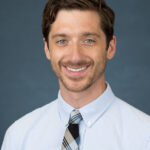 Michael Cammarata, MD, is an assistant professor of medicine at the Johns Hopkins School of Medicine, Baltimore.
Michael Cammarata, MD, is an assistant professor of medicine at the Johns Hopkins School of Medicine, Baltimore.
References
- Murthy VK, O’Brien B, Dhaliwal G. An inquiry into the early careers of master clinicians. J Grad Med Educ. 2018 Oct;10(5):500–506.
- Murthy VK, Boscardin C, Cumbler E, et al. Learning from the early careers of master clinicians. J Eval Clin Pract. 2024 Feb;30(1):129–136.
